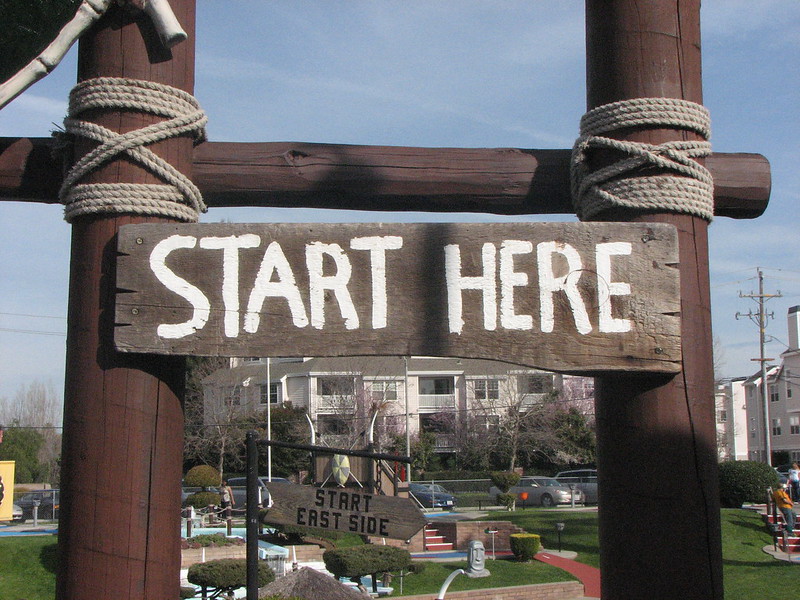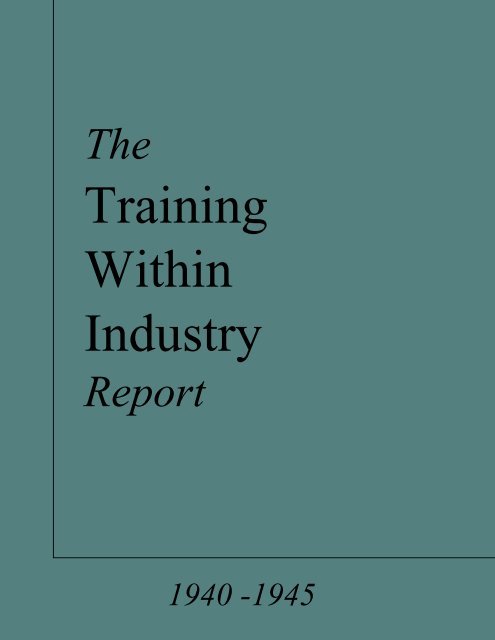Posts Tagged ‘Success’
Defend, Extend, Transcend – A Good Way to Assess Company Priorities
 Defend – Protect your success in its current state. In short, do what you did last time and do no harm.
Defend – Protect your success in its current state. In short, do what you did last time and do no harm.
Extend – Modify and adapt your success. In short, sell similar offerings to similar customers.
Transcend – Obsolete your best work before someone else does.
All three elements can be important to a company’s success and longevity, but it’s more important that the company’s resource allocation aligns with its priorities. But how to tell if the company’s resource allocation matches its priorities? Well, even though I was the one that asked it, I think that’s the wrong question because how a company allocates its resources DEFINES its priorities. Though we don’t usually think of it that way, I think it’s a good way to think about it. It’s a straightforward thing. If it’s a priority, allocate the resources. If it’s not a priority, don’t allocate the resources. But there’s confusion when a company declares its priorities but those words contradict how resources are allocated. Here are two rules to help navigate the confusion:
Rule 1. When there is a difference between how people spend their time and what the company says is a priority, company priorities are defined by how people spend their time.
Rule 2. When there is a difference between how the company spends its money (projects, investments, equipment, other) and what the company says is a priority, company priorities are defined by how the money is spent.
We’re all pretty clear on what the company says are the priorities, but how do you tell if the words are aligned with the actual priorities? Well, measure how the resources are allocated – measure how you spend your time.
Open your calendar and move forward in time by one month and you will see a collection of standing meetings. These are the meetings that are on the schedule and are the meetings that WILL happen. Sure, there will be other meetings that come up, but the standing meetings, the regularly recurring meetings, are a good indicator of how you’ll spend your time. For each meeting in week five, determine if the meeting is a defend, extend, or transcend meeting. If the meeting agenda defines work that protects things as they are, that’s a Defend meeting. If the meeting agenda defines work that modifies or adapts success, that’s an Extend meeting. If the agenda defines work that obsoletes what’s been successful, that is a Transend meeting. Categorize the meetings of week five and tally the hours. Then, repeat for weeks six through eight. You now have a good measure of your resource allocation and the company’s priorities.
If all the meetings are Defend meetings, the company’s priority is to defend what’s been successful. This indicates the company’s priorities have a short-term bias. If this is the case, I hope you have an unfair monopoly. If not, you might consider adding some medium-term work to adapt and extend your success. If half the meetings are Defend meetings and the other half are Extend meetings, that’s a better balance between short-term and medium-term priorities. But I hope there are no startups in your space because, without some Transcend work, one of them might soon eat your lunch. If almost half are Defend, another almost half is Extend, and some are Transcend congratulations. You have a reasonable balance of short and medium priorities and a splash of long-term priorities. I’m not sure the balance is exactly right, but it’s at least a great start.
A similar characterization/quantification can be done for how the company spends its money.
Take a look at the open job requisitions on the company website. Do those positions do work that defends, extends, or transcends? Count them. What does the data say?
Review and tally last year’s capital equipment purchases. Did they defend, extend, or transcend? Do the same for this year’s capital budget. How do you feel about all that?
Count the people who do projects to keep the production line running (defend), count the people who do new product development projects with the same DVP as last time (defend), who do new product development projects that adapt the DVP (extend) and who do technology development that builds on the DVP (extend) or decimates your best product (transcend). What does the tally say?
Review this year’s training budget. What are the relative fractions of extend, defend, and transcend? Do you feel good about that?
There is no best ratio for defend, extend, and transcend. What’s important, I think, is to be objective and clear about how the resources are allocated and to be open and honest about how all that aligns (or not) with the stated priorities. And most important of all is what you do when there’s a mismatch between resource allocation and the stated priorities.
Image credit — Tommy Wong
Four Things That Matter
 Health matters. What did you do this year to take care of your physical health? What did you do this year to take care of your mental health? Next year what can you stop doing to make it easier to take care of your physical and mental health? Without your health, what do you have?
Health matters. What did you do this year to take care of your physical health? What did you do this year to take care of your mental health? Next year what can you stop doing to make it easier to take care of your physical and mental health? Without your health, what do you have?
Family matters. What did you do this year to connect more deeply with your family? And how do you feel about that? Next year what can you change to make it easier to deepen your relationships with a couple of family members? If you’re going to forgive anyone next year, why not forgive a family member? Without family, what do you have?
Friends matter. What did you do this year to reconnect with old friends? What did you do this year to help turn a good friendship into a great one? What did you do this year to make new friends? Next year what will make it easier to reestablish old friendships, deepen the good ones, and create new ones? Without friends, what do you have?
Fun matters. What did you do this year to have fun for fun’s sake? Why is it so difficult to have fun? Next year what can you change to make it easier for you to have more fun? Without fun, what do you have?
“Friendship” by *~Dawn~* is licensed under CC BY 2.0.
What do you like to do?
 I like to help people turn complex situations into several important learning objectives.
I like to help people turn complex situations into several important learning objectives.
I like to help people turn important learning objectives into tight project plans.
I like to help people distill project plans into a single-page spreadsheet of who does what and when.
I like to help people start with problem definition.
I like to help people stick with problem definition until the problems solve themselves.
I like to help people structure tight project plans based on resource constraints.
I like to help people create objective measures of success to monitor the projects as they go.
I like to help people believe they can do the almost impossible.
I like to help people stand three inches taller after they pull off the unimaginable.
I like to help people stop good projects so they can start amazing ones.
If you want to do more of what you like and less of what you don’t, stop a bad project to start a good one.
So, what do you like to do?
Image credit — merec0
If you want to understand innovation, understand novelty.
 If you want to get innovation right, focus on novelty.
If you want to get innovation right, focus on novelty.
Novelty is the difference between how things are today and how they might be tomorrow. And that comparison calibrates tomorrow’s idea within the context of how things are today. And that makes all the difference. When you can define how something is novel, you have an objective measure of things.
How is it different than what you did last time? If you don’t know, either you don’t know what you did last time or you don’t know the grounding principle of your new idea. Usually, it’s a little of the former and a whole lot of the latter. And if you don’t know how it’s different, you can’t learn how potential customers will react to the novelty. In fact, if you don’t know how it’s different, you can’t even decide who are the right potential customers.
A new idea can be novel in unique ways to different customer segments and it can be novel in opposite ways to intermediaries or other partners in the business model. A customer can see the novelty as something that will make them more profitable and an intermediary can see that same novelty as something that will reduce their influence with the customer and lead to their irrelevance. And, they’ll both be right.
Novelty is in the eye of the beholder, so you better look at it from their perspective.
Like with hot sauce, novelty comes in a range of flavors and heat levels. Some novelty adds a gentle smokey flavor to your favorite meal and makes you smile while the ghost pepper variety singes your palate and causes you to lose interest in the very meal you grew up on. With novelty, there is no singular level of Scoville Heat Unit (SHU) that is best. You’ve got to match the heat with the situation. Is it time to improve things a bit with a smokey, yet subtle, chipotle? Or, is it time to submerge things in pure capsaicin and blow the roof off? The good news is the bad news – it’s your choice.
With novelty, you can choose subtle or spicy. Choose wisely.
And like with hot sauce, novelty doesn’t always mix well with everything else on the plate. At the picnic, when you load your plate with chicken wings, pork ribs, and apple pie, it’s best to keep the hot sauce away from the apple pie. Said more strongly, with novelty, it’s best to use separate plates. Separate the teams – one team to do heavy novelty work, the disruptive work, to obsolete the status quo, and a separate team to the lighter novelty work, the continuous improvement work, to enhance the existing offering.
Like with hot sauce, different people have different tolerance levels for novelty. For a given novelty level, one person can be excited while another can be scared. And both are right. There’s no sense in trying to change a person’s tolerance for novelty, they either like it or they don’t. Instead of trying to teach them to how to enjoy the hottest hot sauce, it’s far more effective to choose people for the project whose tolerance for novelty is in line with the level of novelty required by the project.
Some people like habanero hot sauce, and some don’t. And it’s the same with novelty.
Success Strangles
 Success demands people do what they did last time.
Success demands people do what they did last time.
Success blocks fun.
Success walls off all things new.
Success has a half-life that is shortened by doubling down.
Success eats novelty for breakfast.
Success wants to scale, even when it’s time to obsolete itself.
Success doesn’t get caught from behind, it gets disrupted from the bottom.
Success fuels the Innovator’s Dilemma.
Success has a short attention span.
Success scuttles things that could reinvent the industry.
Success frustrates those who know it’s impermanent.
Success breeds standard work.
Success creates fear around making mistakes.
Success loves a best practice, even after it has matured into bad practice.
Success doesn’t like people with new ideas.
Success strangles.
Success breeds success, right up until the wheels fall off.
Success is the antidote to success.
“20204-roots strangle bricks” by oliver.dodd is licensed under CC BY 2.0
How To See What’s Missing
 With one eye open and the other closed, you have no depth perception. With two eyes open, you see in three dimensions. This ability to see in three dimensions is possible because each eye sees from a unique perspective. The brain knits together the two unique perspectives so you can see the world as it is. Or, as your brain thinks it is, at least.
With one eye open and the other closed, you have no depth perception. With two eyes open, you see in three dimensions. This ability to see in three dimensions is possible because each eye sees from a unique perspective. The brain knits together the two unique perspectives so you can see the world as it is. Or, as your brain thinks it is, at least.
And the same can be said for an organization. When everyone sees things from a single perspective, the organization has no depth perception. But with at least two perspectives, the organization can better see things as they are. The problem is we’re not taught to see from unique perspectives.
With most presentations, the material is delivered from a single perspective with the intention of helping everyone see from that singular perspective. Because there’s no depth to the presentation, it looks the same whether you look at it with one eye or two. But with some training, you can learn how to see depth even when it has purposely been scraped away.
And it’s the same with reports, proposals, and plans. They are usually written from a single perspective with the objective of helping everyone reach a single conclusion. But with some practice, you can learn to see what’s missing to better see things as they are.
When you see what’s missing, you see things in stereo vision.
Here are some tips to help you see what’s missing. Try them out next time you watch a presentation or read a report, proposal, or plan.
When you see a WHAT, look for the missing WHY on the top and HOW on the bottom. Often, at least one slice of bread is missing from the why-what-how sandwich.
When you see a HOW, look for the missing WHO and WHEN. Usually, the bread or meat is missing from the how-who-when sandwich.
Here’s a rule to live by: Without finishing there can be no starting.
When you see a long list of new projects, tasks, or initiatives that will start next year, look for the missing list of activities that would have to stop in order for the new ones to start.
When you see lots of starting, you’ll see a lot of missing finishing.
When you see a proposal to demonstrate something for the first time or an initial pilot, look for the missing resources for the “then what” work. After the prototype is successful, then what? After the pilot is successful, then what? Look for the missing “then what” resources needed to scale the work. It won’t be there.
When you see a plan that requires new capabilities, look for the missing training plan that must be completed before the new work can be done well. And look for the missing budget that won’t be used to pay for the training plan that won’t happen.
When you see an increased output from a system, look for the missing investment needed to make it happen, the missing lead time to get approval for the missing investment, and the missing lead time to put things in place in time to achieve the increased output that won’t be realized.
When you see a completion date, look for the missing breakdown of the work content that wasn’t used to arbitrarily set the completion date that won’t be met.
When you see a cost reduction goal, look for the missing resources that won’t be freed up from other projects to do the cost reduction work that won’t get done.
It’s difficult to see what’s missing. I hope you find these tips helpful.
“missing pieces” by LeaESQUE is licensed under CC BY-ND 2.0
Will you be remembered?
 100% agreement means there’s less than 100% truth. If, as a senior leader, you know there are differing opinions left unsaid, what would you do? Would you chastise the untruthful who are afraid to speak their minds? Would you simply ignore what you know to be true and play Angry Birds on your phone? Would you make it safe for the fearful to share their truth? Or would you take it on the chin and speak their truth? As a senior leader, I’d do the last one.
100% agreement means there’s less than 100% truth. If, as a senior leader, you know there are differing opinions left unsaid, what would you do? Would you chastise the untruthful who are afraid to speak their minds? Would you simply ignore what you know to be true and play Angry Birds on your phone? Would you make it safe for the fearful to share their truth? Or would you take it on the chin and speak their truth? As a senior leader, I’d do the last one.
Best practice is sometimes a worst practice. If, as a senior leader, you know a more senior leader is putting immense pressure put on the team to follow a best practice, yet the context requires a new practice, what would you do? Would you go along with the ruse and support the worst practice? Would you keep your mouth shut and play tick-tack-toe until the meeting is over? Would you suggest a new practice, help the team implement it, and take the heat from the Status Quo Police? As a senior leader, I’d do the last one.
Truth builds trust. If, as a senior leader, you know the justification for a new project has been doctored, what would you do? Would you go along with the charade because it’s easy? Would call out the duplicity and preserve the trust you’ve earned from the team over the last decade? As a senior leader, I’d do the last one.
The loudest voice isn’t the rightest voice. If, as a senior leader, you know a more senior leader is using their positional power to strong-arm the team into a decision that is not supported by the data, what would you do? Would you go along with it, even though you know it’s wrong? Would you ask a probing question that makes it clear there is some serious steamrolling going on? And if that doesn’t work, would you be more direct and call out the steamrolling for what it is? As a senior leader, I’d do the last two.
What’s best for the company is not always best for your career. When you speak truth to power in the name of doing what’s best for the company, your career may suffer. When you see duplicity and call it by name, the company will be better for it, but your career may not. When you protect people from the steam roller, the team will thank you, but it may cost you a promotion. When you tell the truth, the right work happens and you earn the trust and respect of most everyone. As a senior leader, if your career suffers, so be it.
When you do the right thing, people remember. When, in a trying time, you have someone’s back, they remember. When a team is unduly pressured and you put yourself between them and the pressure, they remember. When you step in front of the steamroller, people remember. And when you silence the loudest voice so the right decision is made, people remember. As a senior leader, I want to be remembered.
Do you want to be remembered as someone who played Angry Birds or advocated for those too afraid to speak their truth?
Do you want to be remembered as someone who doodled on their notepad or spoke truth to power?
Do you want to be remembered as someone who kept their mouth shut or called out the inconvenient truth?
Do you want to be remembered as someone who did all they could to advance their career or someone who earned the trust and respect of those they worked with?
In the four cases above, I choose the latter.
“cryptic.” by dfactory is licensed under CC BY 2.0
Just start.
 You’re not missing anything. It’s time to start.
You’re not missing anything. It’s time to start.
Afraid to fail? Start anyway.
Don’t have the experience? Well, you won’t be able to say that once you start.
Just start. It’s time.
Don’t have the money? Start small. And if that won’t work, start smaller.
Start small, but start.
Worried about what people might say? There’s only one way to know, so you might as well start.
You’re not an imposter. It’s time to start.
Waiting isn’t waiting, it’s a rationalization to block yourself from starting.
Here’s a rule: If you don’t start you can’t finish.
The only thing in the way of starting is starting.
The fear of success is the strongest stopper of starting. Be afraid of success, and start.
There’s never a good time to start, but there’s always a best time – now.
Worried about the negative consequences of starting? Be worried, and start.
Don’t think you have what it takes? The only way to know for sure is to start.
There’s no way around it. Starting starts with starting.
“Golfland start” by twid is licensed under CC BY-SA 2.0
The Foundation of Leadership Development — Work Products
 Leadership development is a good idea in principle, but not in practice. Assessing a person against a list of seven standard competencies does not a leadership development plan make. Nor does a Meyers-Briggs assessment or a strengths assessment. The best way I know to describe the essence of leadership development is through a series of questions to assess and hire new leaders.
Leadership development is a good idea in principle, but not in practice. Assessing a person against a list of seven standard competencies does not a leadership development plan make. Nor does a Meyers-Briggs assessment or a strengths assessment. The best way I know to describe the essence of leadership development is through a series of questions to assess and hire new leaders.
Here’s the first question: Is this person capable of doing the work required for this leadership position? If you don’t start here, choose the person you like most and promote (or hire) them into the new leadership position. It’s much faster, and at least you’ll get along with them as the wheels fall off.
Next question: In this leadership position, what work products must the leader create (or facilitate the creation of)? Work products are objective evidence that the work has been completed. Examples of work products: analyses, reports, marketing briefs, spreadsheets, strategic plans, product launches, test results for new technologies. Here’s a rule: If you can’t define the required work products, you can’t define the work needed to create them. Here’s another rule: If you can’t define the work, you can’t assess a candidate’s ability to do that work. And if you can’t assess a candidate’s ability to the work, you might as well make it a popularity contest and hire the person who makes the interview committee smile.
Next question: Can the candidate show work products they’ve created that fit with those required for the leadership position? To be clear, if the candidate can show examples of all the flavors of work products required for the position, it’s a lateral move for the candidate. That’s not a bad thing, as there are good reasons candidates seek lateral positions (e.g., geographic move due to family or broadening of experience – new product line or customer segment). And if they’ve demonstrated all the work products, but the scope and/or scale are larger, the new position, the new position is a promotion for the candidate. Here’s a rule: if the candidate can’t show you an example of a specific work product or draw a picture of one on the whiteboard, they’ve never done it before. And another rule: when it comes to work products, if the candidate talks about a work product but can’t show you, it’s because they’ve never created one like that. And talking about work products in the future tense means they’ve never done it. When it comes to work products, there’s no partial credit.
Next question: For the work products the candidate has shown us, are they relevant? A candidate won’t be able to show you work products that are a 100% overlap with those required by the leadership position. The context will be different, the market will be different, and the players will be different. But, a 50-70% overlap should be good enough.
Next question: For the relevant work products the candidate has shown us, do they represent more than half of those required? If yes, go to the next question.
Next question: For the work products the candidate has not demonstrated, has the team done them? If the team has done a majority of them, that’s good. Go to the next question.
Next question: For the work products the candidate or team has not demonstrated, can we partner them with an expert (an internal one, I hope) who has? If yes, hire the candidate.
Leadership development starts with the definition of the new work the leader must be able to do in their next position. And the best way I know to define the work is to compile a collection of work products that must be created in the next position and match that against the collection of work products the leader has created. The difference between the required work products and the ones the leader has demonstrated defines the leadership development plan.
To define the leadership development plan, start with the work products.
And to help the leader develop, think apprenticeship. And for that, see this seminal report from 1945.
The Dark Underbelly of Success
 Best practice – a tired recipe you recycle because you think the world is static.
Best practice – a tired recipe you recycle because you think the world is static.
Emergent practice – a new way to work created from whole cloth because the context is new.
Worst practice – a best practice applied to a world that has changed around you.
Novel practice– work that recognizes the world is a different place but is dismissed out-of-hand because everyone wants to live in the comfortable past.
Continuous improvement – when you try to put a shine on a tired, old process that worked ten years ago.
Discontinuous improvement – work that is disrespectful to the Status Quo and hurts people’s feelings.
Grow the core – when you do what you did in 2010 because you don’t know what else to do.
Obsolete your best work – when you do work that makes it clear to your customers that they should not have purchased your most successful product.
Reduce operating expense – what you do when you don’t know how to grow the top line and want to eliminate the flexibility to respond to an uncertain future.
Grow the top line – when you launch a new product that causes your customers to happily throw away the product they just bought from you.
A PowerPoint slide deck that defines your strategic plan – an electronic work product that distracts you from the reality of an ever-changing future.
A new product that is radically better than your last one – what you should create instead of a PowerPoint slide deck that defines your strategic plan.
MBA – a university degree that gives you a pedigree so companies hire you.
Ph.D. – a university degree that teaches you to learn, but takes too long.
Return On Investment (ROI) – a calculation that scuttles new work that would reinvent your business.
Imagination – thinking that will help you navigate an uncertain future, but is knee-capped by the ROI calculation.
Standard work – a process you used last time and will use next time because, again, you think the world is static.
Judgment – thinking that creates a whole new business trajectory to address an uncertain future but can get you fired if you use it.
A sustainable competitive advantage – a relic of a slow-moving world.
Continual change – the only way to deal with an ever-accelerating future.
Success – profits from work done by people who retired from your company some time ago.
Success – the thing that blocks you from working on the unproven.
Success – what pays the bills.
Success – what jeopardizes your ability to pay the bills in five years.
Success – why people think old practices are best practices.
Success – why new work is so difficult to do.
Success – why continuous improvement carries the day.
Success – why discontinuous improvement threatens.
Success – the mother of complacency.
“dark underbelly” by JoeBenjamin is licensed under CC BY-NC 2.0
Sometimes too much is just that – too much.
 When your best isn’t good enough, how do you feel? When your best isn’t good enough, what do you do? But more importantly, when your best isn’t good enough, what does that say about you?
When your best isn’t good enough, how do you feel? When your best isn’t good enough, what do you do? But more importantly, when your best isn’t good enough, what does that say about you?
If your best used to be good enough and now it isn’t, there are four possible explanations. 1.) Expectations increased and your performance is unchanged. 2.) Expectations increased and your performance increased less. 3.) Expectations increased and your performance decreased.
If expectations of your performance haven’t increased over last year, I want to work where you work because your company is an oasis (and an aberration). Since nearly all industries and occupations are governed by the unnatural mindset of growth-year-on-year-no-matter-what, it’s highly likely your performance expectations have increased. There’s no need to review this scenario.
In scenario one, your performance is unchanged. Why? Well, you may have tried to increase your performance but issues unrelated to work have consumed huge amounts of your emotional energy, and this new drain on your emotional energy consumed the energy you needed to increase your performance. A list of such issues includes global warming, deforestation, plastic in our water supply, COVID, political unrest, and the regular issues such as medical care for aging parents, death of your parents, inevitable health issues related to your aging. What does that say about you?
In scenario two, your performance increased, but the increase was insufficient. Maybe your performance would have increased quite a bit, but the special cause issues (COVID, etc.) along with the common cause issues (you and your parents get older every year) impacted your performance in a way that lessened the increase in your performance. Without the special causes, you would have met the increased expectations, but because of them, you did not. What does that say about you?
In scenario three, even though expectations increased, your performance decreased. In this case, it could be that political unrest and the other special causes teamed up with the common causes (stress of everyday life) to reduce your performance. What does that say about you?
In thermodynamics, there’s a law whose implications make it certain that there’s a limit to the amount of matter (stuff) you can put in a control volume (a defined volume that has a limit). That means that if every year you add air to a balloon, eventually it pops. Even the strongest ones. And when you extend this notion to people, it says that no matter how much pressure you apply to people, there’s a limit to what they can achieve. And if you apply pressure that overcomes their physical limit, they pop. Even the strongest ones. Or, maybe, especially the strongest ones because they try to take on more than their share.
People have a physical limit, and people cannot indefinitely support a mindset of growth-every-year-no-matter-what. No matter what, people will pop. It’s not if, it’s when. And add in the special causes of COVID, political unrest, and environmental problems and people pop sooner and cannot do what they did last year, no matter what.
And what does all this say about you? It says you are trying harder than ever. It says you are strong. It says you are amazing.
And what does it say about growth-every-year-no-matter-what? It says we should stop with all that, at least for a while.
Image credit — Judy Schmidt
 Mike Shipulski
Mike Shipulski